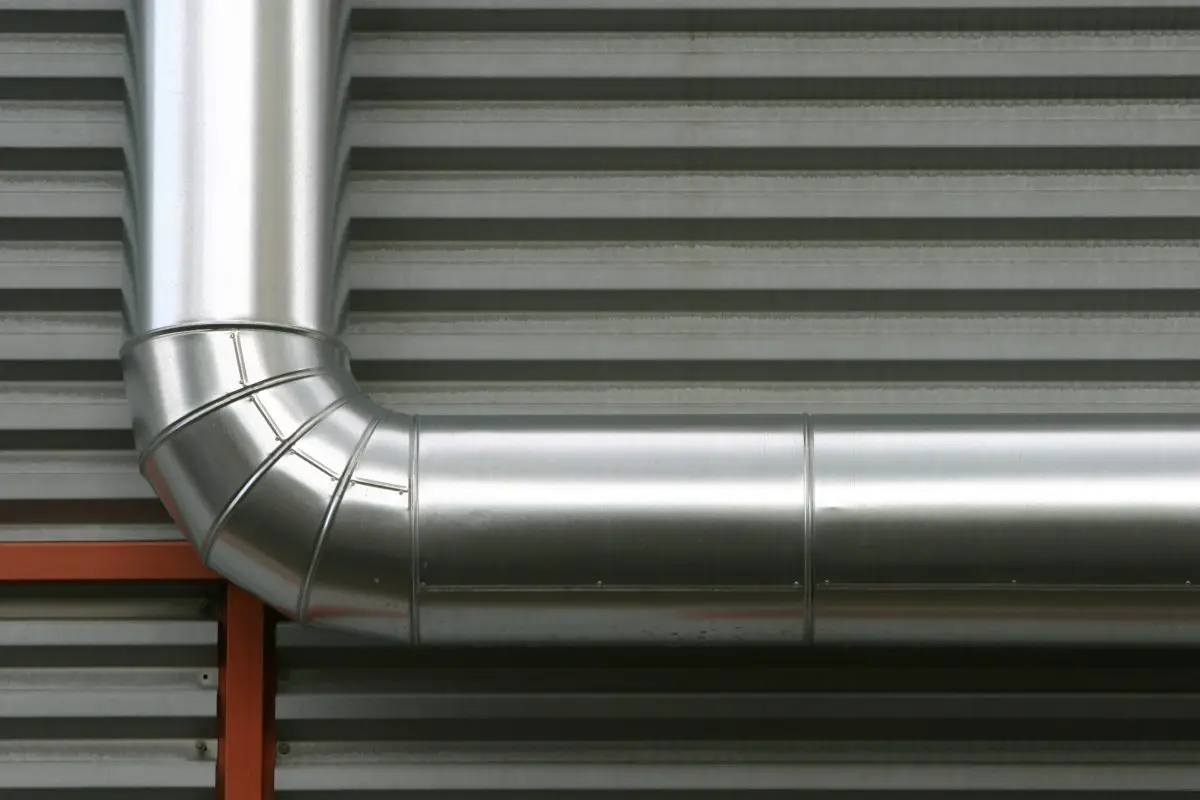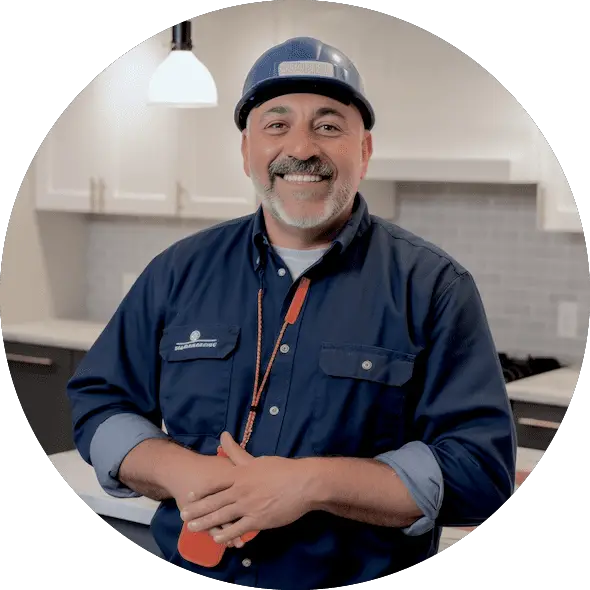If you’re working on your kitchen ventilation system, you’ve probably encountered a few areas you need to work around. The best way to do this is by using a duct elbow. But can you use too many elbows? And how many elbows are too many?
In this post, we will discuss the HVAC elbows, an elbow radius, the degree of elbows you can use in an HVAC system, and how many elbows you should use in your range hood to maintain the best airflow in your HVAC system.
You may need to use an elbow in the ducting to set up your range hood correctly. For the best results, your duct run should have no more than two elbows.
What are HVAC elbows?
When navigating a tight turn, HVAC systems employ elbows. They help your system maneuver around obstructions while keeping the airflow at its best. Some HVAC elbows, like snap locks, smoke pipes, and collars, can be changed and are used to control airflow. Air conditioning and refrigeration elbows may be made from galvanized steel, stainless steel, or aluminum; their thicknesses vary according to use.

COSMO COS-63190S Wall Mount Range Hood

COSMO COS-63190S Wall Mount Range Hood
What is elbow radius?
This is the radius of the mean curvature around the elbow. Short-radius elbows, also known as SR elbows, are often used in low-pressure and low-speed pipelines where the radius is the same as the pipe diameter. Long radius elbows (LR Elbows) are used in high-pressure and high-flow rate pipelines where the radius is greater than the pipe diameter, R 1.5 Diameter.
What degree of elbows can you use in an HVAC system
Elbows come in different angles, with 45, 90, and 180 being the most common, and these angles correspond to the direction of the fluid in the pipes. Additionally, there are 120-degree and 60-degree options for more specialized pipelines.
Long radius 90-degree elbow
The 90-degree steel pipe elbow, also known as the vertical elbow, is used to make a 90-degree shift in the flow direction. It is the most frequently utilized degree for pipelines and elbows of all degrees.
Pipes and tubes of varying lengths need LR 90-degree steel pipe elbows to connect them. It’s useful for connecting hoses to pumps, deck drains, and valves and allows for a 90-degree shift in direction.
Short radius 90-degree elbow
The only difference between the SR 90-degree elbow and the pipe elbow we discussed is that the SR elbow has a smaller diameter. For this reason, steel elbows are often used when space is at a premium.
The 45-degree elbow of a long radius
The 45-degree pipe elbow may be installed between two pipes to redirect flow. In addition, friction and pressure are reduced at a 45-degree elbow compared to a 90-degree one.
The 45-degree elbow of a short radius
A 45-degree SR elbow may be connected to brass, bronze, copper, plastic, steel, cast iron, lead, stainless steel, and rubber. It is used by various industries, including chemical, food, water supply, electrical, horticultural, agricultural, solar equipment, and air conditioning.
180-degree steel elbow
The 180-degree steel elbow facilitates a low-pressure direction shift at 180 degrees. It can only be used in systems with low turbulence and low deposition. These do not work for kitchen exhaust fans.
What is a segmented elbow?
A segmentable elbow will have the right nominal diameter and low tolerances if it has an internal mandrel. In addition, thanks to the small gap between the fitting and the pipe, welding may be done quickly and cheaply from the outside, eliminating the need for costly pups (on the construction site itself).

How many elbows should you use?
It’s hard to answer this question because it depends on the ventilation system, elbow size, and elbow shape. But I would say no more than two elbows, maybe three. When putting in your kitchen’s ducting system for ventilation, remember:
- The 4-inch duct is too small for a range hood if it must be vented via the ceiling or wall.
- A duct size of 5 inches is needed for a fan with a CFM of 100 to 200.
- You can’t use a 5-inch duct for a 200 CFM range hood because you’d have to add an elbow.
- For a range hood with a maximum airflow of 300 CFM, a duct larger than 6 inches in diameter is required.
- With a range hood that generates 150 CFM and a duct that is 5 inches in diameter, you may install no more than one elbow.
- You can only have one elbow using a 250 CFM range hood with a 6″ duct.
How far apart should elbows be
Make sure there is at least 15 feet of straight ducting between any bends or connections. You’ll also need 15 feet of straight ducting between the blower and the elbow. The proximity between elbows and transitions reduces ventilation efficiency. If you must use an elbow, leave at least 18 inches between it and the range hood’s connection. The kitchen’s air will have difficulty escaping if the elbow is any closer than 18 inches.
How to determine the radius of your duct elbow
When figuring out the effects of airflow, static pressure, and wear, the length of the sweep, which is directly related to the radius, is a very important factor. One standard radius is 1.5 times D, another is two times D, and another is 2.5 times D. (Long Radius). An elbow with a diameter of 4 inches would have a radius of 6 inches (1.5×4).
You can also picture this by putting an elbow at a 90-degree angle on the floor and figuring out how far apart the two points are. (Deduct the arc of the elbow from the total.) The radius may be calculated by dividing the height by the diameter.
If you want even more tips and insights, watch this video called “Easy way to Adjust an HVAC Metal Elbow for Different Angles” from the Jeff Frantz YouTube Channel.
This video called “Easy way to Adjust an HVAC Metal Elbow for Different Angles” from the Jeff Frantz YouTube Channel.
Frequently asked questions (FAQ)
Do you still have questions? Below are some of the most commonly asked questions about using elbows in range hood ductwork
How long does semi-rigid ducting last?
You should expect a longer life from a semi-rigid duct than a flexible one. While flexible ducting may work, rigid ducting is preferable for your kitchen hood. Since better raw materials are utilized to manufacture them, they last the longest.
How long should a range hood last?
If you take care of your kitchen hood and keep it in good shape, it shouldn’t need any repairs for at least ten years. However, a lightbulb might burn out, or the panel controls could malfunction.
What is CFM?
The airflow rate of an appliance or tool is measured in cubic feet per minute (CFM).
Conclusion
Hiring a professional to install the vent system can save you from any issues. If you use ductwork that is installed properly.
This article covered HVAC elbows, the elbow radius, and the degree of elbows you can use in an HVAC system. Here are some key takeaways:
Key takeaways
- Some HVAC elbows, like snap locks, smoke pipes, and collars, can be changed and are used to control airflow.
- Short-radius elbows, also known as SR elbows, are often used in low-pressure and low-speed pipelines where the radius is the same as the pipe diameter.
- We all know that elbows come in different angles, with 45, 90, and 180 being the most common, and that these angles correspond to the direction of the fluid in the pipes.
- Most home stoves and cooktops measure between 30 and 36 inches in width.
- In no circumstances should you ever use the attic as a location for your range hood’s exhaust?
- Long-term exposure to the attic’s accumulated chemical, grease, and smoke particles may harm one’s health.
So, do you use elbows in your range hood? And did I cover everything you wanted to know? Let me know in the comments section below (I read and reply to every comment). If you found this article helpful, check out my full blog for more tips and tricks in your kitchen. Thanks for reading, and stay safe.















